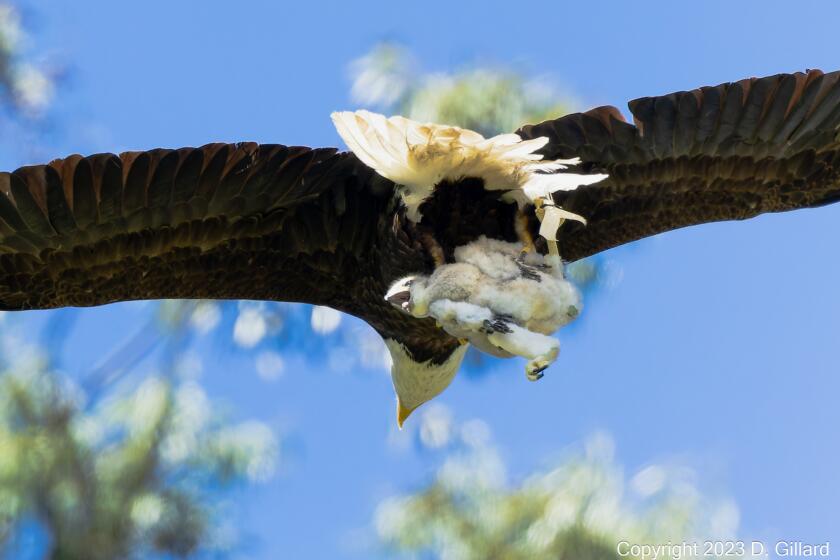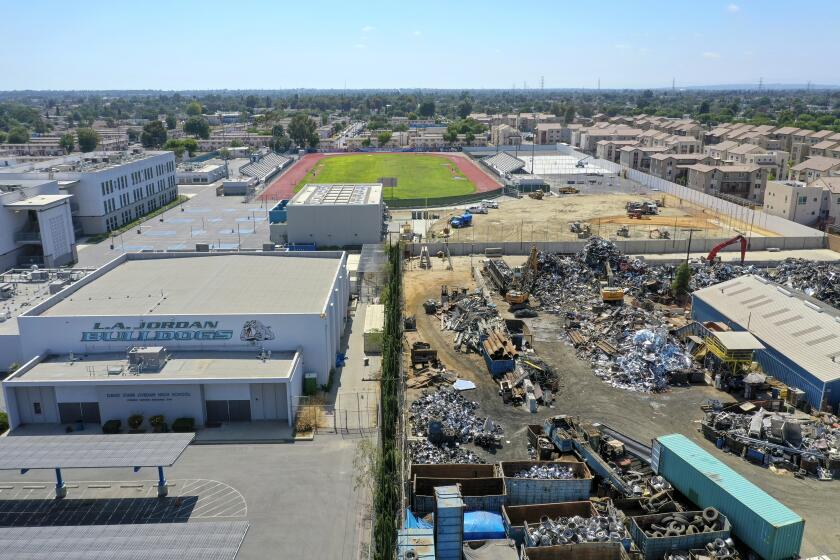California Congress members call for expansion of San Gabriel Mountains National Monument
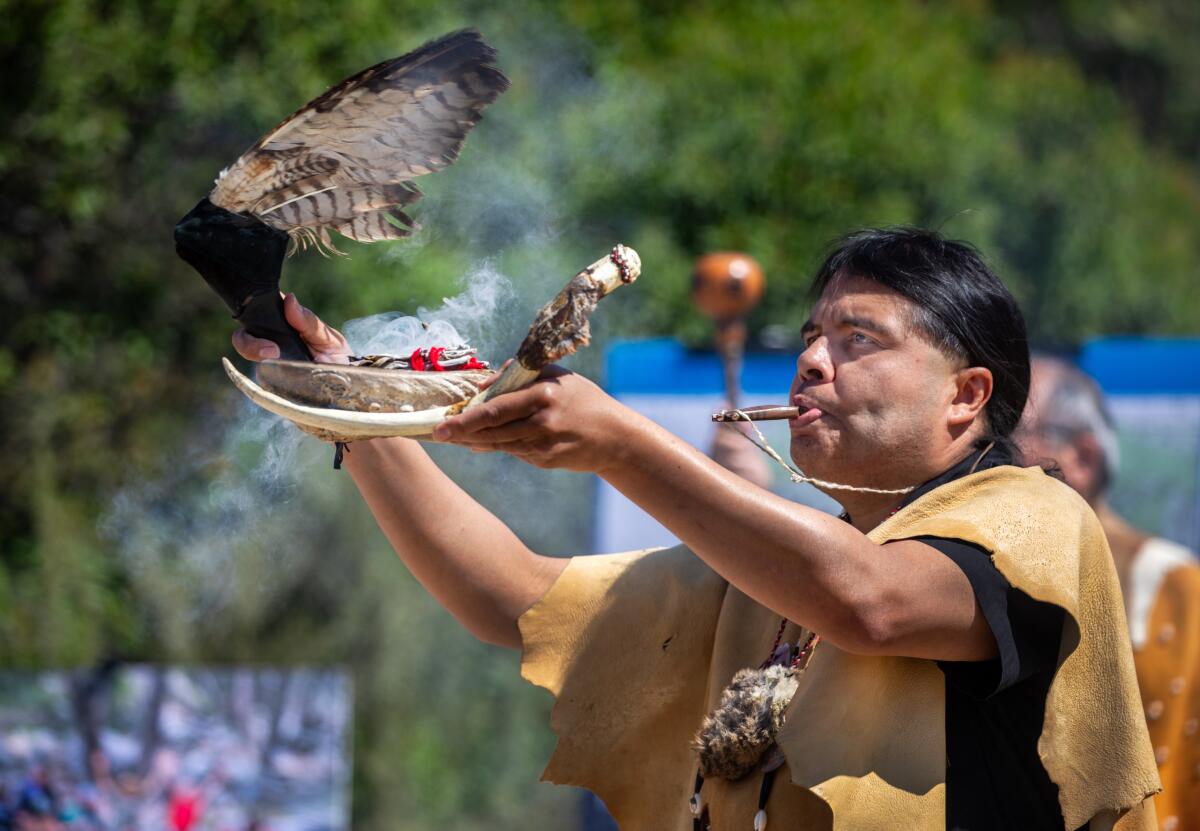
- Share via
In a bid to expand wilderness protections to the mountains and foothills just north of the Los Angeles Basin, California Rep. Judy Chu and Sen. Alex Padilla have asked President Biden to add 109,167 acres to the San Gabriel Mountains National Monument — an act they say would help preserve an area that is rich in historical and ecological significance and is within just an hour’s drive of 18 million people.
The move would increase the monument by roughly a third, and extend its boundaries to the back door of San Fernando Valley neighborhoods including Sylmar, Santa Clarita and Pacoima. It would also give the U.S. Forest Service greater ability to protect natural resources and manage crowds in areas left out of the 2014 monument designation by then-President Obama.
“From increased access to nature for underserved communities, to protecting the source of one-third of L.A. County’s drinking water, our region’s economy, health and environment will extensively improve from such a designation by the president,” Chu (D-Monterey Park) said.
“I hope that President Biden will recognize the importance of these lands,” she said.
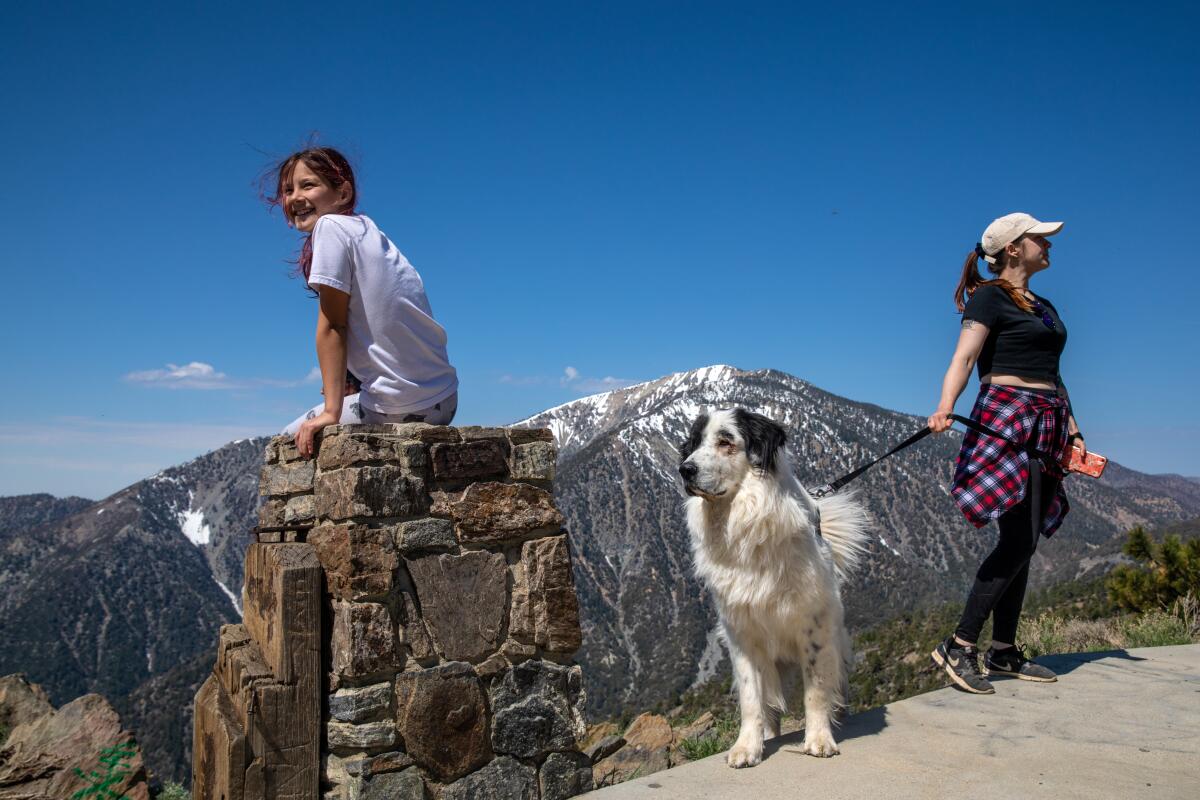
A decade ago, the city touted a $1-billion plan to turn a stretch of the L.A. River into something resembling its natural state. Yet today there are few visible signs of progress.
In a June 8 letter to Biden, the California Democrats asked the president to bypass Congress and issue a presidential proclamation under the Antiquities Act of 1906. The law authorizes presidents to create national monuments on federal land to protect “objects of historic and scientific interest.”
The pair said the president needed to act unilaterally, because the Republican-controlled House of Representatives seemed unwilling to approve a package of conservation bills that would not only expand the monument, but also create 31,000 acres of new wilderness areas and add 45.5 miles to the National Wild and Scenic Rivers system.
“Sadly, the problem comes down to the Republican majority in the House of Representatives, which is trying to shrink environmental protections,” Padilla said.
“Our request would establish better protection for more areas of the San Gabriel Mountains for conservation and improve public access to a range that has served as a glorious backdrop to the downtown L.A. skyline in countless advertising campaigns and postcards,” he said.
The proposed expansion would come with no new government money for managing and maintaining the monument, although advocates hope funds will come from public and private donations and from adjusting the Forest Service budget.
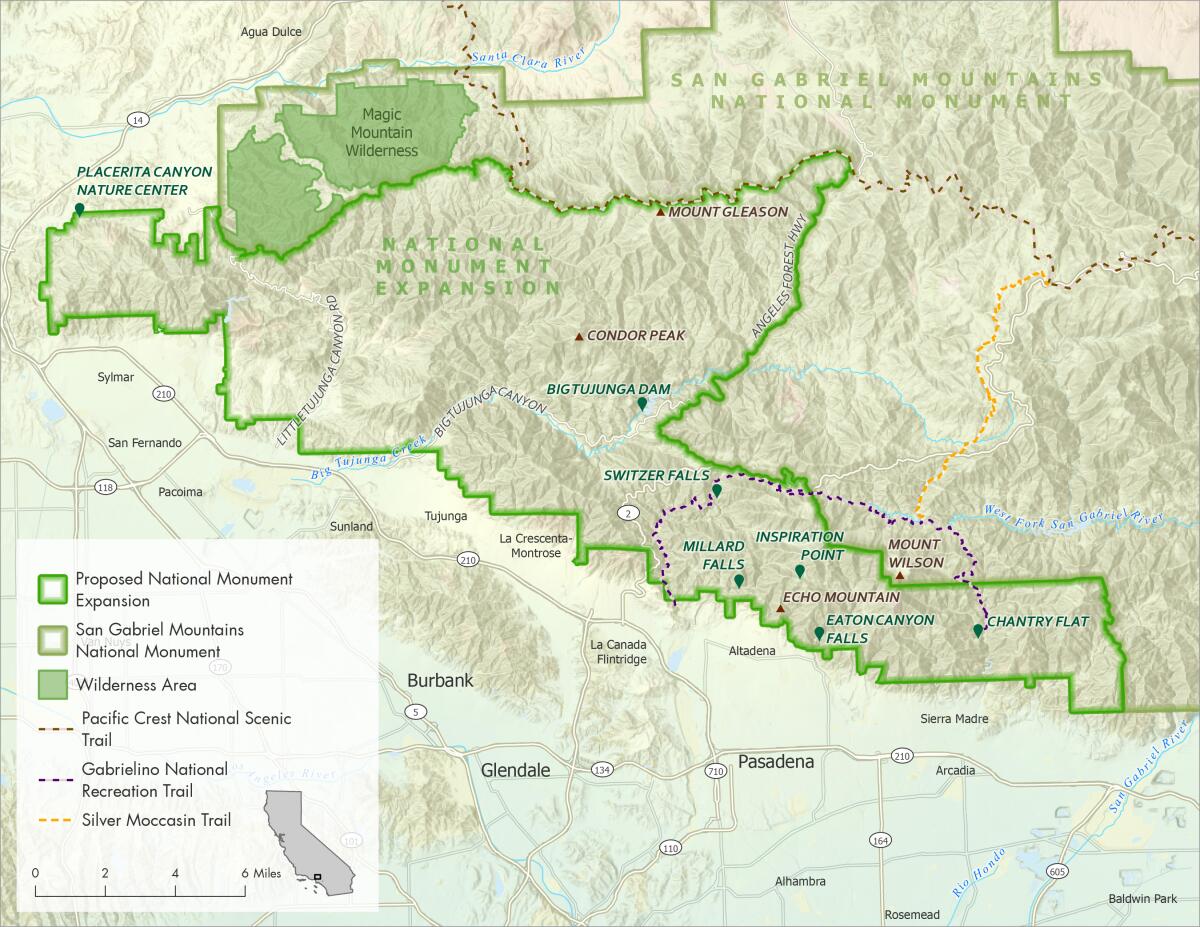
“The monument is not a national park, but by most estimates it meets the requirements for that level of attention,” said Belén Bernal, executive director of Nature for All, a coalition of environmental and community groups that has long campaigned for more parks and safe outdoor opportunities in one of the largest metropolitan areas in the United States.
After a hike above Pasadena’s Eaton Canyon in 1877, John Muir described the San Gabriel Mountains as the place where “Mother Nature is most ruggedly, thornily, savage.”
Stretching from Santa Clarita to San Bernardino, the San Gabriel Mountains watershed provides Los Angeles County with 70% of its open space and roughly 30% of its water.
The brutal saga of a baby hawk that was kidnapped and raised by bald eagles has riveted Bay Area birdwatchers. No one’s entirely sure what’s going on.
Its rugged canyons, wrinkled slopes and waterfalls are home to 22 species of rare and endangered species of plants and animals including the San Gabriel River dudleya, Nelson’s bighorn sheep, mountain yellow-legged frogs, western pond turtles, Santa Ana suckers, tricolored blackbirds and California condors. Bigcone Douglas fir trees only grow in the mountains of Southern California.
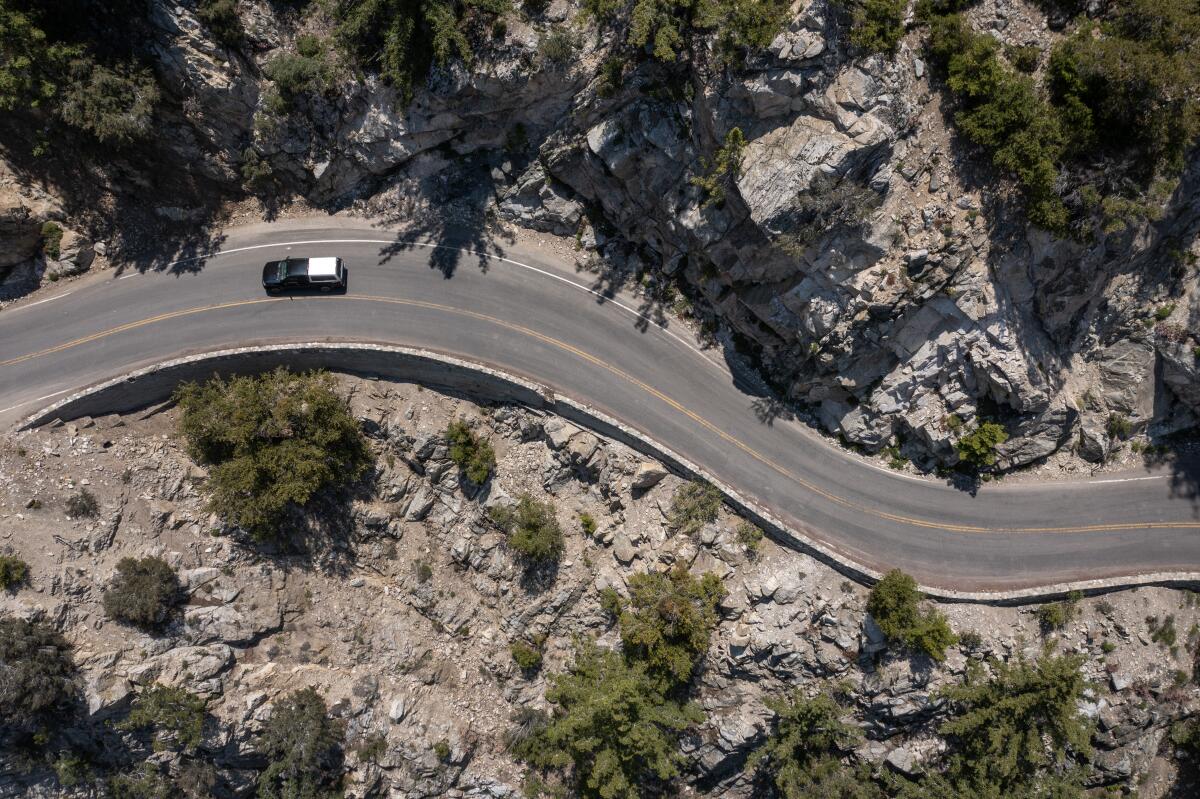
The proposed 182-square-mile expansion would push the monument’s boundaries to the southwest and include portions of Big Tujunga Creek, the Arroyo Seco, the upper Los Angeles River and the upper Santa Clarita River.
The area encompasses Bear Divide, a slot in a ridgeline overlooking the city of Santa Clarita that is used by thousands of migrating birds as they make their way from Central America toward the Arctic.
But the region is also susceptible to fires and to crowds, who bring vandalism, drug deals, car burglaries, trash, illegal campfires and emergency rescues.
L.A. County Dist. Atty. George Gascón has has filed more than two dozen criminal charges against a notorious scrap metal recycler in Watts.
If the expansion is approved, it would mark the fourth time that Biden has used his executive powers to establish or expand a national monument without congressional approval. He joins a long list of chief executives who see creating a monument as a way to enhance their legacy, and woo potential voters in an impending election year.
Presidents dating back to Theodore Roosevelt have invoked the Antiquities Act to sidestep Congress to protect areas of historic or scientific interest. Critics say the tactic unreasonably limits logging, grazing, mining or other activities including rock collecting across wide swaths of the West.
Of the total 17 national monuments in California, only two were established by Congress: the Santa Rosa and San Jacinto Mountains National Monument, in 2000, and Saint Francis Dam Disaster National Monument, in 2019.
The proposal to expand the San Gabriel Mountains monument comes at a time when the Biden administration has pledged to safeguard Indigenous, cultural and environmental sites under its “America the Beautiful” initiative, which seeks to conserve and connect 30% of the nation’s lands and water by 2030.
But for John Monsen, a Sierra Club activist, it represents a step toward the dream of creating what he describes as an “arch of protection” stretching from the Cajon Pass in the east to the Santa Monica Mountains National Recreation Area in the west.
On Monday morning, the earthy smell of burning sage filled the air as Native Americans and officials led by Chu and Padilla gathered at Eaton Canyon Nature Center in Pasadena to publicly call on Biden to expand the monument.
With that goal in mind, Ellie Morales Recalde, 10, of the San Gabriel Band of Mission Indians Gabrieleno/Tongva, helped lead a ceremony.
Later, as the officials were preparing to leave, she gazed up at the rocky slopes and said, “It is important to protect these mountains because they are a place of natural beauty and healing.”
“They are also our ancestral land,” she said. “The mountains and Gabrieleno Tongva are still here. Survivors.”

